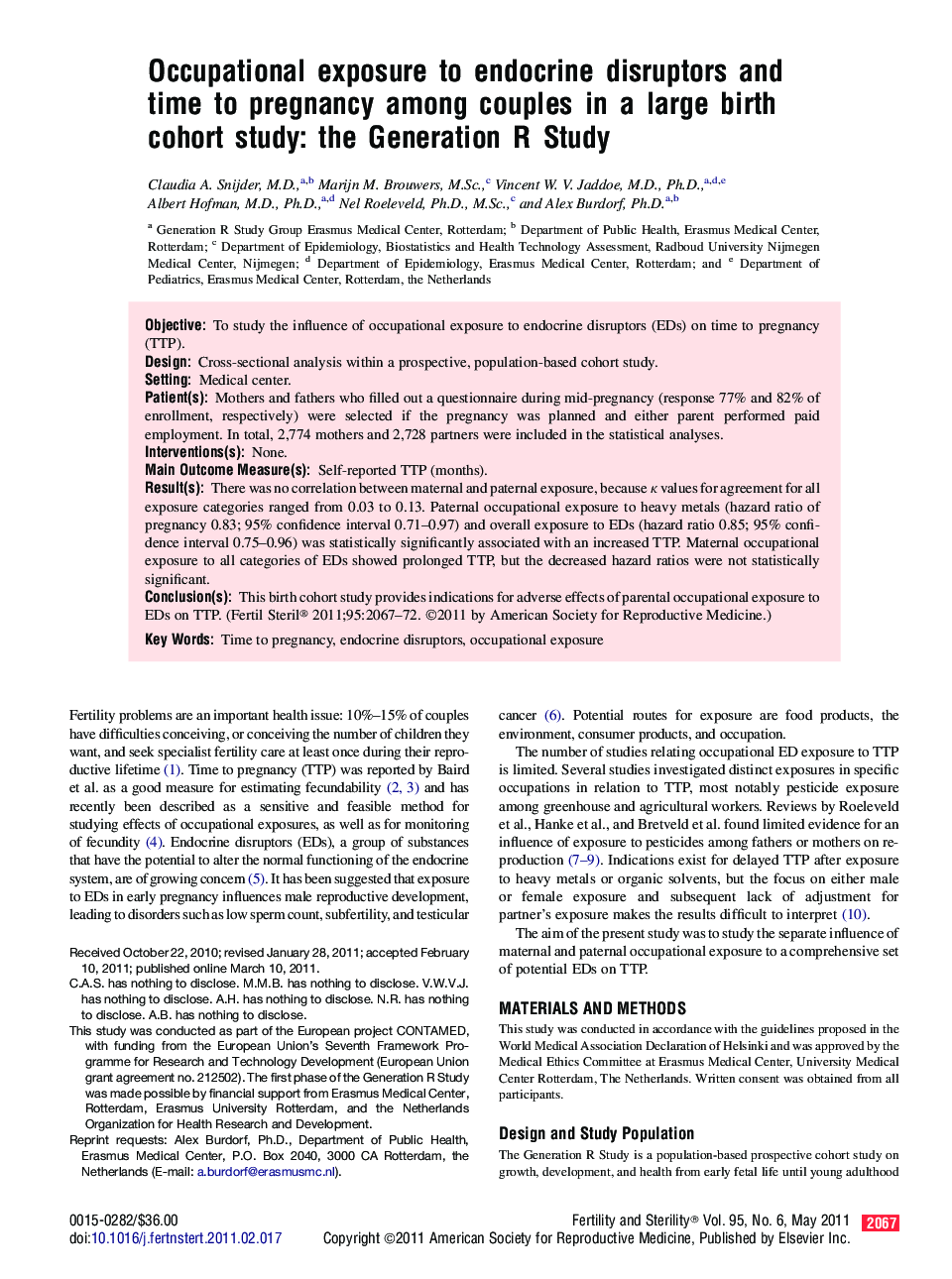| Article ID | Journal | Published Year | Pages | File Type |
|---|---|---|---|---|
| 3940084 | Fertility and Sterility | 2011 | 6 Pages |
ObjectiveTo study the influence of occupational exposure to endocrine disruptors (EDs) on time to pregnancy (TTP).DesignCross-sectional analysis within a prospective, population-based cohort study.SettingMedical center.Patient(s)Mothers and fathers who filled out a questionnaire during mid-pregnancy (response 77% and 82% of enrollment, respectively) were selected if the pregnancy was planned and either parent performed paid employment. In total, 2,774 mothers and 2,728 partners were included in the statistical analyses.Interventions(s)None.Main Outcome Measure(s)Self-reported TTP (months).Result(s)There was no correlation between maternal and paternal exposure, because κ values for agreement for all exposure categories ranged from 0.03 to 0.13. Paternal occupational exposure to heavy metals (hazard ratio of pregnancy 0.83; 95% confidence interval 0.71–0.97) and overall exposure to EDs (hazard ratio 0.85; 95% confidence interval 0.75–0.96) was statistically significantly associated with an increased TTP. Maternal occupational exposure to all categories of EDs showed prolonged TTP, but the decreased hazard ratios were not statistically significant.Conclusion(s)This birth cohort study provides indications for adverse effects of parental occupational exposure to EDs on TTP.
